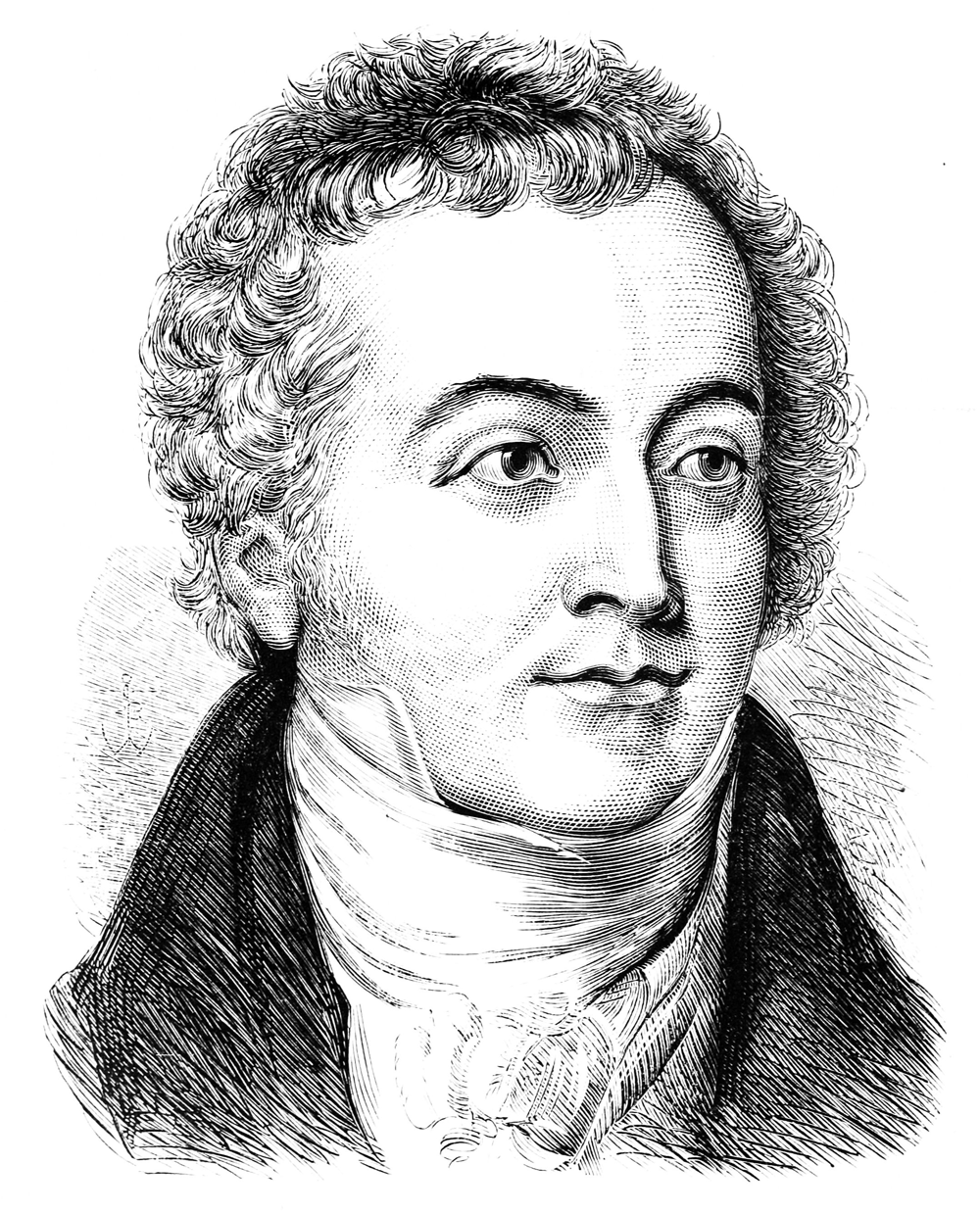Thomas Young, Polymath
by Andrew Boyd
Today, a most interesting man. The University of Houston presents this series about the machines that make our civilization run, and the people whose ingenuity created them.
It's hard to know quite where to start when discussing the accomplishments of Thomas Young. His contributions to physics? His practice of medicine? His controversy over deciphering the Rosetta Stone?

Thomas Young. Photo Credit: Wikimedia Commons
Young was born in 1773 in Milverton, England, the eldest of ten children. By age 14 he'd learned Greek and Latin and was familiar with a dozen more languages. At just 21 he was appointed a member of England's Royal Society and at 23 earned a degree in medicine and began work as a physician. A few years later Young was appointed a lecturer in natural philosophy at the prestigious Royal Institution of England. When pressed by the Encyclopaedia Britannica for contributions, Young offered his expertise on a long list of topics ranging from annuities to tides. So broad were his interests that one biographer was moved to call Young "the last man who knew everything."
Young was likable, but had a bad habit of talking technobabble, leaving him open to accusations he hadn't mastered his native English. Late in his career Young turned his attention to the Rosetta Stone, where he's credited with a major breakthrough leading to its decipherment. Ultimate credit is usually reserved for Jean-François Champollion, but the relative contribution of the two men remained hotly debated for decades, no doubt fueled by the nationalistic competitiveness of the French and English.

The Rossetta Stone Photo Credit: Wikimedia Commons
Remarkable as his work was on the Rosetta Stone, an equally impressive feat was an experiment he reported on before the Royal Society. Known as the double-slit experiment, it demonstrated that light displayed interference patterns characteristic of waves. "The experiments I am about to relate," said Young, ''may be repeated with great ease, whenever the sun shines, and without any other apparatus than is at hand to everyone." Today, a laser pointer is preferred over sunlight, but the experiment's equally easy to perform.

Thomas Young's sketch of two-slit diffraction of light. Photo Credit: Wikimedia Commons
Young wasn't the first to claim light was a wave, but his experiment was hard to ignore. What made it especially interesting was that the results contradicted a position taken by Newton a hundred years earlier in his treatise Opticks. Newton believed light was a particle, and given the master's towering reputation Young's wave claim was met with great skepticism. It took another century for the world to appreciate that both Newton and Young were correct. As nonsensical as it seems, light sometimes acts like a wave and sometimes like a particle. And an extended version of Young's double-slit experiment demonstrating this wave-particle duality provides us with one of the great mysteries of modern physics.
Yet, Rosetta Stone and double-slits aside, Young's legacy wasn't defined by any single achievement, but by the breadth of his work. It's hard to imagine in this age of specialization. But if we're to understand Thomas Young and the time in which he lived, we must.
I'm Andy Boyd at the University of Houston, where we're interested in the way inventive minds work.
(Theme music)
A. Robinson. The Last Man Who Knew Everything: Thomas Young, the Anonymous Genius Who Proved Newton Wrong and Deciphered the Rosetta Stone, Among Other Surprising Feats. New York: Plume, 2006.
Thomas Young (scientist). From the Wikipedia website: https://en.wikipedia.org/wiki/Thomas_Young_%28scientist%29. Accessed September 8, 2015.
This episode was first aired on September 10, 2015